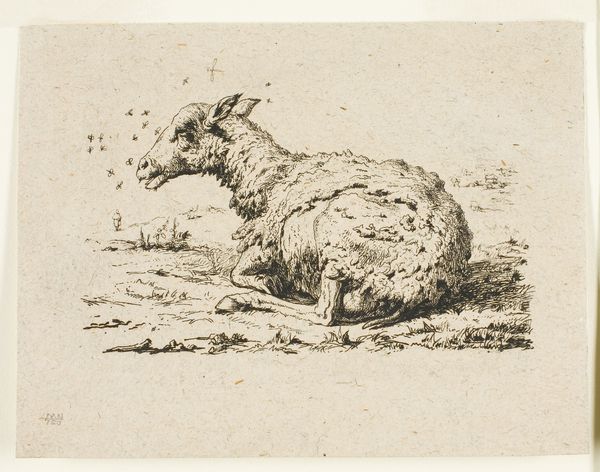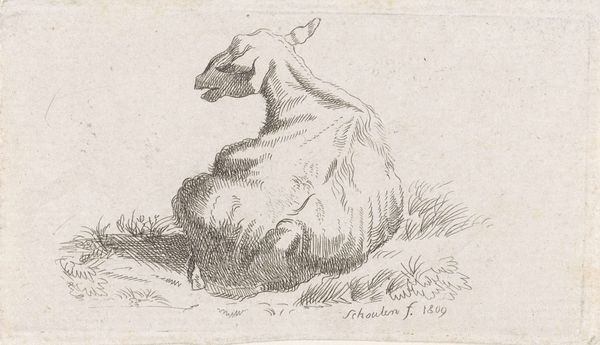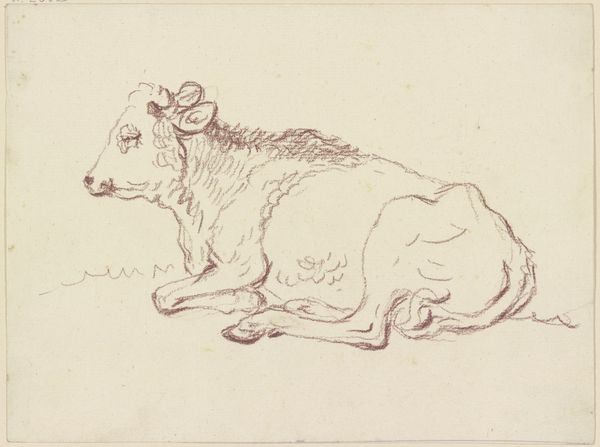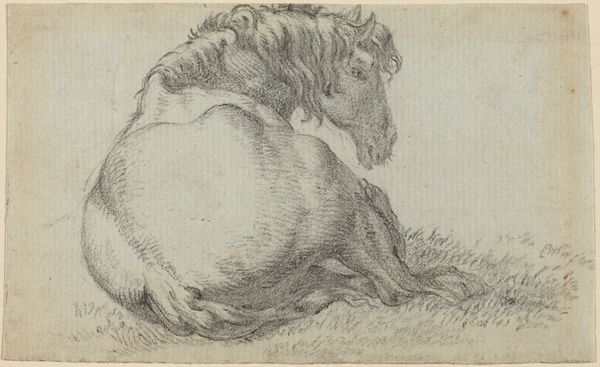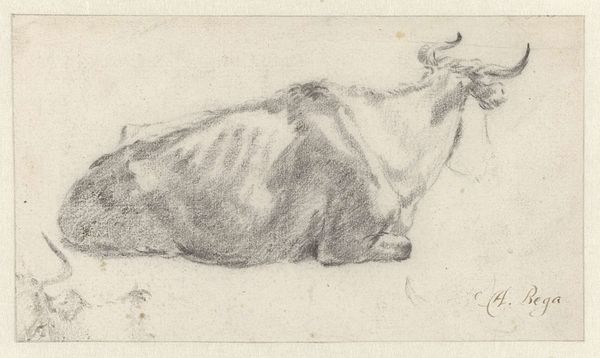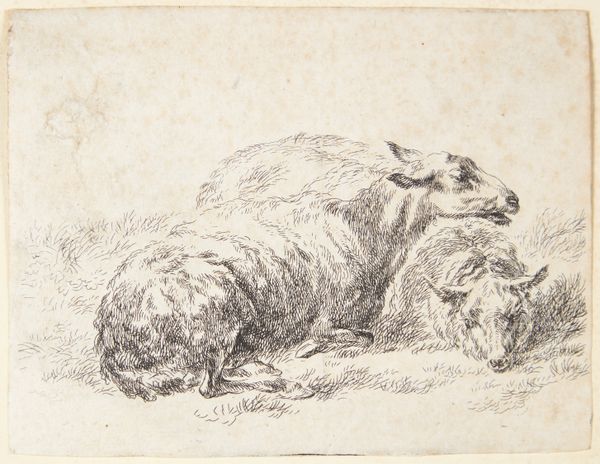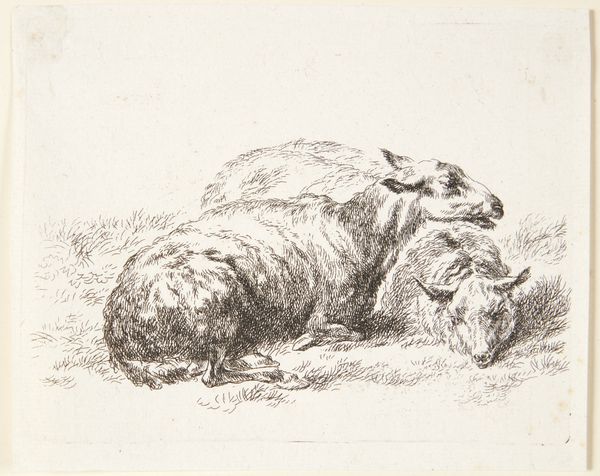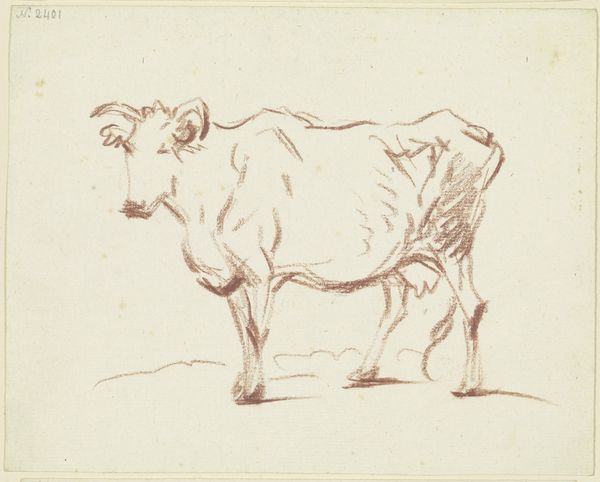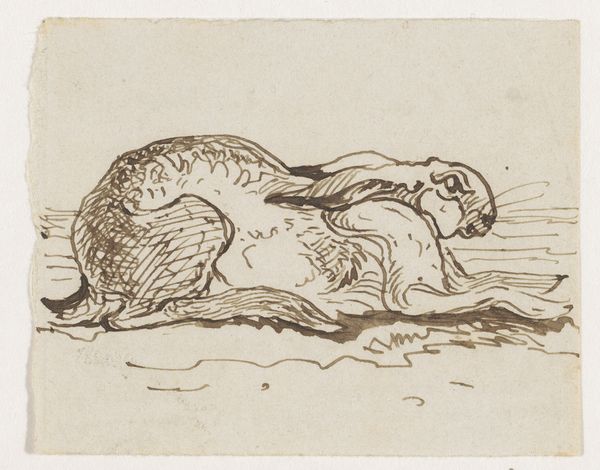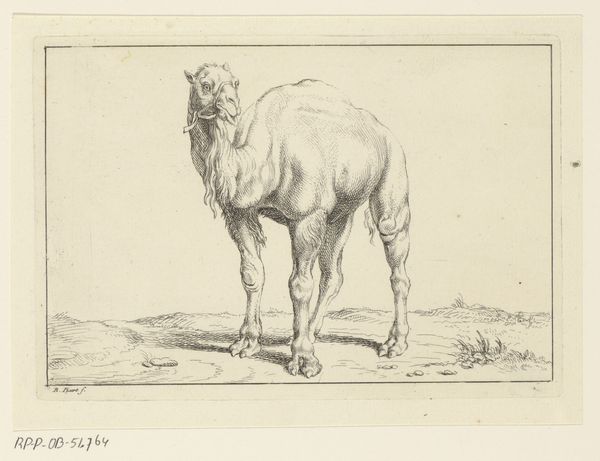
drawing, pencil
#
portrait
#
drawing
#
baroque
#
etching
#
pencil drawing
#
pencil
#
pencil work
#
realism
Dimensions: overall: 19.9 x 30.6 cm (7 13/16 x 12 1/16 in.)
Copyright: National Gallery of Art: CC0 1.0
Editor: So, this is Johann Elias Ridinger's "A Dromedary," from around the 1750s. It’s a red chalk drawing, and I find the creature’s posture so...placid. What do you see in this piece? Curator: I see a fascinating collision of colonialism and natural history. Consider the context: The mid-18th century was a period of intense European exploration and exploitation. Animals, like this dromedary, became symbols of the exotic "other," brought back, dissected, and displayed. Ridinger, primarily an animalier, participated in constructing and perpetuating these views. How does that reading sit with you, thinking about its "placid" nature? Editor: That adds a whole layer. I hadn't considered it as part of that colonial gaze, just as an innocent depiction of an animal. Now, I’m questioning whether the docility I perceived was, perhaps, enforced. Curator: Exactly! Ridinger likely hadn't observed the animal in its natural environment, but likely from specimen brought to Europe. He's participating in a visual tradition that transforms a living creature into an object of scientific, artistic, and frankly, colonial consumption. Where is its agency? Editor: It’s chilling to think about the camel being reduced to a mere subject, stripped of its own story. How complicit was Ridinger in this? Curator: That's the complex question, isn’t it? Was he consciously engaging in colonial practices, or was he simply a product of his time, reflecting its values? Either way, the artwork becomes a potent reminder of the power dynamics inherent in representation. It forces us to think critically about who gets to tell whose story. Editor: I’m definitely viewing this drawing differently now. It's not just a portrait; it’s a historical artifact that reveals unsettling aspects of our past. Thank you! Curator: And thank you for engaging with such important questions. It's in these dialogues that we challenge the power structures embedded within art history.
Comments
No comments
Be the first to comment and join the conversation on the ultimate creative platform.
